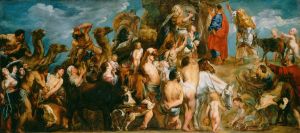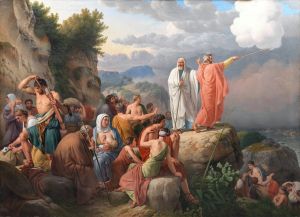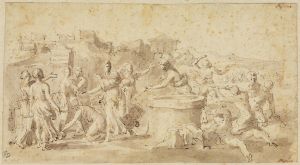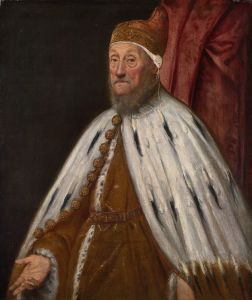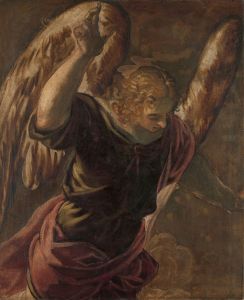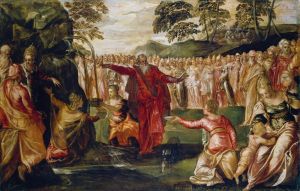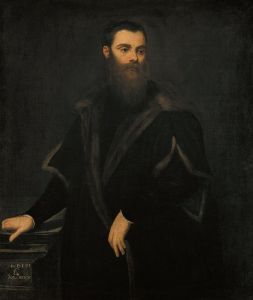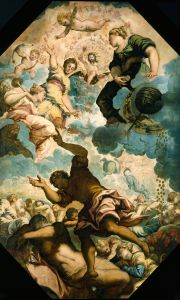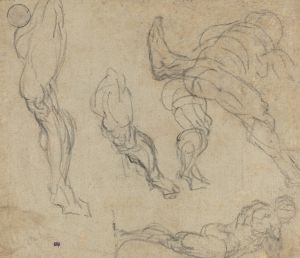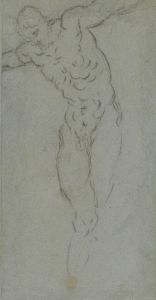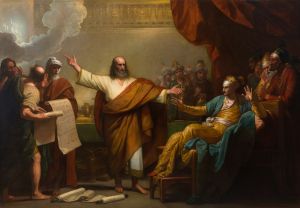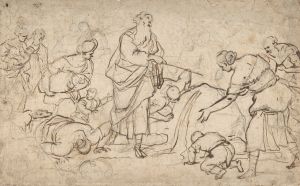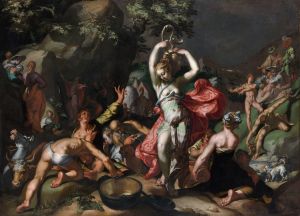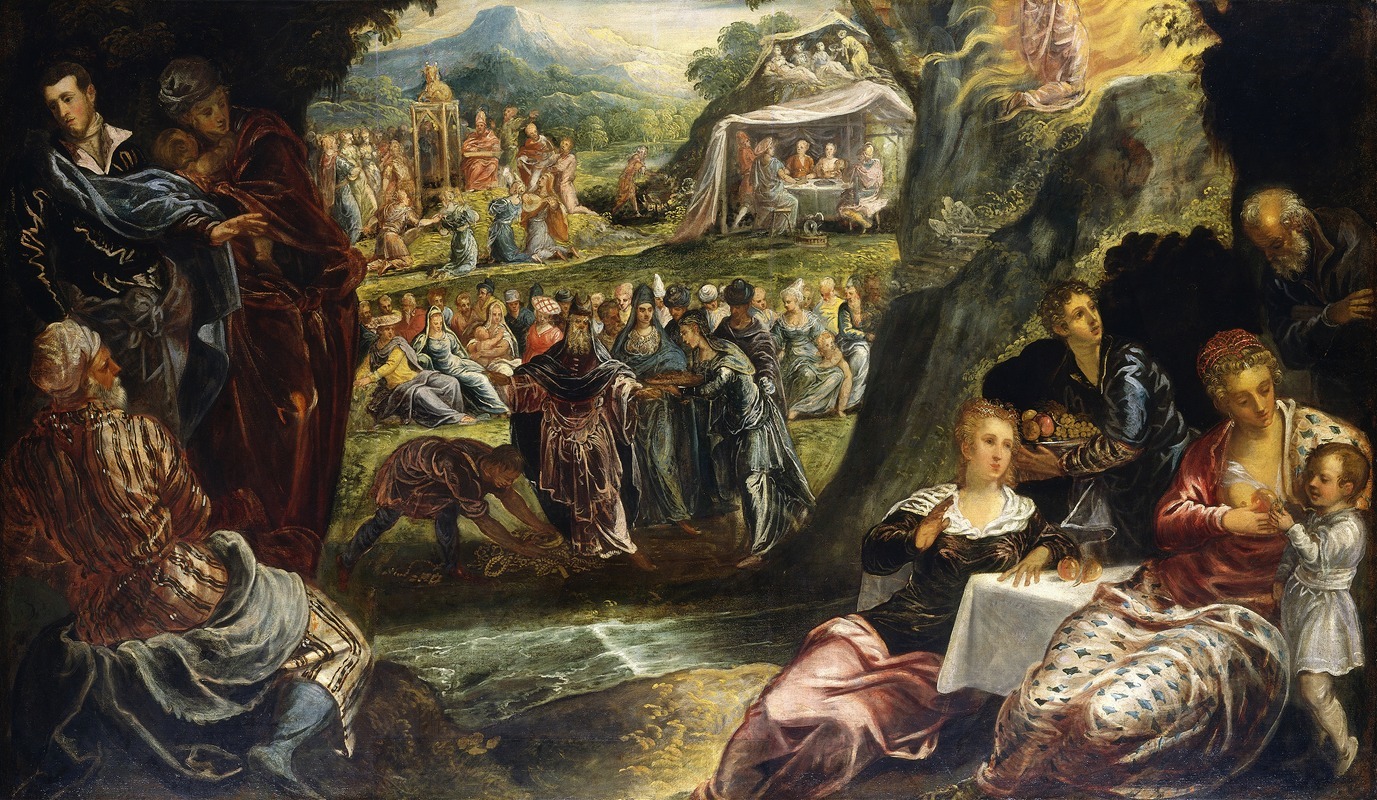
The Worship of the Golden Calf
A hand-painted replica of Jacopo Tintoretto’s masterpiece The Worship of the Golden Calf, meticulously crafted by professional artists to capture the true essence of the original. Each piece is created with museum-quality canvas and rare mineral pigments, carefully painted by experienced artists with delicate brushstrokes and rich, layered colors to perfectly recreate the texture of the original artwork. Unlike machine-printed reproductions, this hand-painted version brings the painting to life, infused with the artist’s emotions and skill in every stroke. Whether for personal collection or home decoration, it instantly elevates the artistic atmosphere of any space.
Jacopo Tintoretto, an eminent figure of the Venetian Renaissance, is renowned for his dynamic compositions and vigorous brushwork. One of his notable works is "The Worship of the Golden Calf," which exemplifies his distinctive style and thematic interests. This painting is part of a larger series of biblical scenes that Tintoretto created, showcasing his ability to convey complex narratives through dramatic visual storytelling.
"The Worship of the Golden Calf" depicts a scene from the Old Testament, specifically from the Book of Exodus. In this biblical narrative, the Israelites, having been led out of Egypt by Moses, grow impatient during his prolonged absence on Mount Sinai. In their impatience, they demand that Aaron, Moses' brother, create a tangible god for them to worship. Aaron complies by fashioning a golden calf from the jewelry of the Israelites, which they then worship with revelry and offerings.
Tintoretto's interpretation of this scene is marked by his characteristic use of dramatic lighting and vigorous movement. The composition is likely filled with a sense of chaos and fervor, capturing the moment of idolatry with a dynamic arrangement of figures. The artist's use of chiaroscuro—contrasting light and shadow—enhances the emotional intensity of the scene, drawing the viewer's eye to the central action and emphasizing the moral implications of the Israelites' actions.
Tintoretto's work often reflects the influence of his Venetian contemporaries, as well as the broader artistic currents of the Renaissance. His paintings are known for their bold compositions and the energetic movement of figures, which can be seen in "The Worship of the Golden Calf." The painting likely features a complex interplay of figures, each contributing to the overall narrative and emotional impact of the scene.
While specific details about the painting's current location or provenance might not be readily available, Tintoretto's works are generally housed in various prestigious collections and museums around the world. His contributions to the art world have been widely recognized, and his paintings continue to be studied for their innovative approach to composition and narrative.
In summary, Jacopo Tintoretto's "The Worship of the Golden Calf" is a vivid representation of a pivotal biblical event, rendered with the artist's signature dynamism and dramatic flair. Through his masterful use of light, shadow, and movement, Tintoretto captures the essence of the Israelites' transgression, offering a powerful visual commentary on themes of faith, idolatry, and divine retribution.





